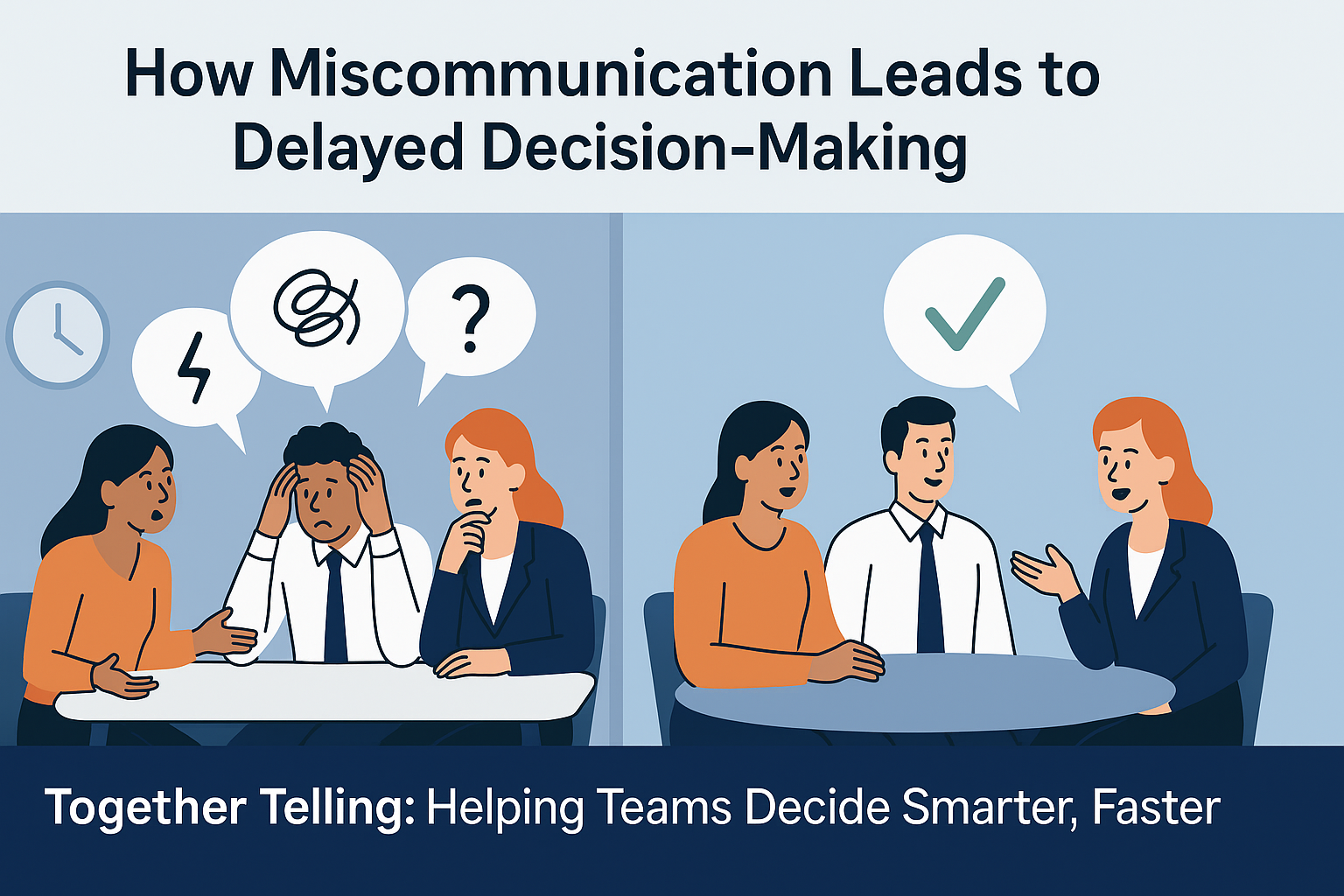
Introduction: The Meeting That Never Ended
Let me take you back to one of the longest meetings I’ve ever sat through. It started at 10 AM sharp—a seemingly simple strategy session to finalize a product rollout. By 12 PM, we were still discussing the same three bullet points. By 2 PM, people had stopped contributing and started checking their emails instead. And by 4 PM, well, let’s just say I wasn’t sure if we were rolling out a product or just rolling in circles.
The worst part? When we walked out of that six-hour marathon, no one actually knew what had been decided.
This, my friends, is miscommunication in action. It doesn’t just create confusion—it paralyzes decision-making, wastes time, and frustrates teams. And yet, I see it happen over and over again in organizations across industries.
So why does miscommunication cause such massive delays, and more importantly, how do we fix it? Let’s break it down.
How Miscommunication Leads to Delays

1. Conflicting Interpretations of Information: “I Thought You Meant…”
One of the biggest culprits behind decision paralysis is when two (or more) people hear the same information and interpret it completely differently.
Example: I once worked with a leadership team that spent three weeks debating whether to “accelerate the project timeline.”
The operations team thought it meant reallocating resources to speed things up.
The finance team thought it meant adjusting budgets to accommodate faster execution.
The product team thought it meant removing certain features to meet a tighter deadline.
The result? Three weeks of discussions with no actual progress.
The Fix: Before moving forward, always ask: “How does everyone interpret this decision?” You’d be surprised how many different answers you get—and how much time you can save by clarifying upfront.
2. Unclear Objectives Leading to Repeated Discussions: The Endless Loop
Nothing slows down decision-making more than unclear objectives. If people don’t know exactly what needs to be decided, they will—without fail—continue debating until someone either runs out of patience or the meeting gets rescheduled (again).
Example: I once consulted for a company where a simple decision about launching a new service took four months. Why? Because every meeting ended with “Let’s revisit this next week”—not because the decision was complex, but because no one had defined what success looked like.
The Fix: Before any decision-making session, write down the exact objective. Instead of a vague goal like “Let’s finalize the marketing strategy,” try “Today’s goal is to choose between Strategy A or B and confirm a launch date.”
This keeps discussions focused and prevents the dreaded cycle of re-discussing the same topic next week.

3. Poorly Documented Conversations: “Didn’t We Already Decide That?”
If a decision is made in a meeting and no one documents it, did it actually happen?
Example: A client of mine had a weekly leadership call where major decisions were made, but no documentation was kept. A month later, half the leadership team had forgotten those decisions, and they ended up re-debating the same points all over again.
The Fix: Every meeting should have a designated note-taker (or use AI tools to transcribe key takeaways). Before the meeting ends, summarize:
What was decided
Who is responsible
What happens next
Send a recap email or document the action points in a shared system so there’s no confusion moving forward.
How Together Telling Enhances Communication for Faster Decisions
At Together Telling, we specialize in turning endless discussions into actionable decisions. Here’s how we help teams stop wasting time and start executing efficiently:
1. Implementing Structured Meeting Frameworks
We teach organizations how to run structured decision-making sessions that eliminate ambiguity. Our approach ensures:
Every meeting has a clear purpose and time-boxed discussions.
Key decisions are documented in real-time.
Follow-ups are scheduled immediately to track execution.
This stops teams from falling into the “let’s revisit this later” trap and ensures that decisions lead to action, not just more meetings.

2. Encouraging Concise and Direct Messaging
We work with teams to improve communication clarity by:
Training leaders to give direct, actionable instructions.
Teaching teams how to frame discussions clearly to avoid confusion.
Reducing unnecessary back-and-forth by focusing on solutions, not just discussions.
If you want decisions to happen faster, your communication must be crisp, focused, and aligned.
Final Thoughts: Cut the Confusion, Speed Up Decisions
Delayed decisions aren’t just frustrating—they’re expensive. Every extra meeting, email thread, or Slack discussion drains productivity and slows momentum. But the good news? It’s entirely fixable.
Clarify objectives before discussions start.
Make sure everyone has the same understanding of decisions.
Document key takeaways and assign accountability.
The more structured and intentional your communication is, the faster (and more effectively) your team can move forward.
Backlink Sources:
How Miscommunication Kills Productivity

